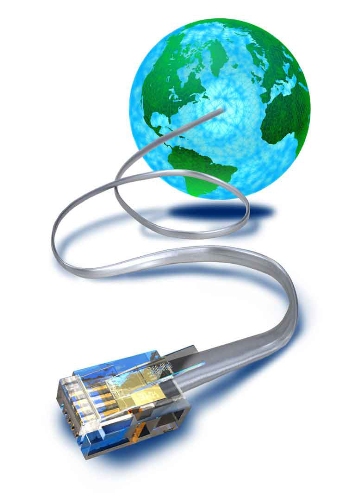What’s Keeping Goa From Getting Fast Internet?
Life has become very frustrating for Lovell D’Souza. Giving up a high-flying job at internet giant Google in Hyderabad, the 29-year-old web programmer decided to settle down in the land of his birth, and run his own freelance web services.
It’s been a year now and Lovell is struggling to get the most basic of his needs – a fast and reliable internet connection in his village of Parra. Be it over the airwaves through a 3G connection or through a physical wire, good internet has eluded him.
“The private operators like Ethernet Xpress just do not provide their services to Parra, leaving us at the mercy of BSNL, the most useless of them all,” he says.
His is a story repeated throughout Goa, which so far has been unable to obtain the sort of fast, reliable internet now available in many parts of India, especially the metros.
Make no mistake. Internet penetration in Goa, as in the rest of India, is growing extremely rapidly (30 percent or more annually nationwide, by most accounts). And overall, connectivity remains on an upward curve. But the truth is that here in Goa, broadband availability has been a story of fits and starts, with notable setbacks at every turn. The latest major issue affecting internet connectivity in Goa is a decision by Tata Docomo to vastly scale back its 3G offerings in the state.
Many areas remain out of reach of 3G and other fast internet options. To be sure, with the sale of smart phones and other internet-friendly devices going through the roof, it seems likely connectivity will improve over time. Vodafone and Idea are two internet service providers already offering 3G services, although it is restricted to Goa’s major towns, and the penetration is still low. A few broadband providers such as GWave and Hathway are promising to expand their wireless networks, and some users seem happy with these services. Commercial users, though, are keen on seeing more fibre optic cables right from one’s doorstep to the central exchange, as a way to ensure the best internet connection.
Yet the BSNL lines of Goa remain woefully inadequate.
Bharat Sanchar Nigam Limited or BSNL is a public company that was set up after the government decided to wrap up its department of telecommunications and allow private players into the picture. BSNL inherited not just the extensive network that the government set up, but also their staff and their infamous, entirely lethargic work ethic.
“Their service in Saligao and Parra is pathetic and their lines drop constantly. The junior engineer is never in his office and never available,” D’Souza said.
D’Souza is not alone. Budding entrepreneurs, small industries and business establishments are tearing their hair out over Goa’s expensive and ineffective internet services.
Private companies don’t admit it, but their services are often little different from that of the government.
Perhaps there’s no better example of Goa’s internet woes than the recent decision by Tata Docomo to withdraw its GSM 3G services from Goa. The white wifi dongle provided by the company in recent months had emerged as perhaps the best, fastest internet connection available for home users in the state. So when the company decided to take down dozens of towers providing this service in recent weeks, customers were left stunned.
A technician for Tata Docomo contacted for this story said the decision was “on account of user complaints of poor connectivity”. But an informal Goa Streets survey of users revealed that’s simply not the case. Users reported exceptionally fast performance with the Tata Photon 3G wifi dongle. More likely, the company made its decision based on poor profitability.
Given Goa’s low density of population when compared with the big cities of India, telecom companies often consider it a huge infrastructure investment with inadequate returns.

They also have more comical reasons for not willing to venture into the villages of the state. A constant complaint is miscreants stealing cables in the dead of night. In the scrap market, cables fetch nearly as much as a brand new cable.
“Cost of internet in Goa is pretty high considering the return mileage of the same … Not just the return mileage, but the set-up pricing, service issues and of course, the penetration are the basic problems,” said Prajyot Mainkar, a budding entrepreneur who runs his own company developing smartphone applications.
His company, Androcid Media Pvt. Ltd also struggles with inadequate internet.
Industry representatives concur that the granting of 4G or LTE (Long Term Evolution) Licences by the central government should help improve the situation of connectivity in Goa.
With physical lines as poor as they are, one might expect more from the wireless networks, which cost less to create. But Goa loses out here, too.
“3G is a joke in Goa,” D’Souza said, adding that he if cannot receive a wireless connection living barely three kilometres from the bustling town of Mapusa, it would be a surprise if anyone in Goa could.
Mobile connections work for low-end usage and can often sustain bandwidth for typical home use, but not for heavy duty usage requiring transmission of large files, managing a web service or setting up a server to handle online client needs.
Many in Goa simply choose the government services, resigning themselves to the poor performance.
“I’ve been exposed to broadband services in different countries, so I know how green the grass is on the other side. We have a long way to go, unfortunately. Even though I know I pay way too much, I still pay. BSNL is the only provider of broadband in my area and so I have no choice but to succumb to their tariffs,” said Nihal Melwani, a student at Vasco da Gama.
GWave, set up in Goa by the Department of Information Technology, is supposed to be a relatively fast service. However, since it began in 2011, the network has succeeded in attracting only a few hundred private users. The rest are government offices and some commercial users.
GWave remains unavailable in most parts of Goa. It supports about 129 e-services in about 23 government departments like transport, tourism, panchayats, collectorates, civil supplies, and other areas.
There is an increasing demand that broadband and internet services in Goa be brought on par with those of other cities, especially Hyderabad and Bangalore.
“In Hyderabad I used to pay Rs 1,000 per month for a 20 MBPS line. Here I won’t even get 1 MBPS for the same fee in Goa,” D’Souza said.
The government says it wants to turn Goa into a centre of the IT industry. That, of course, will remain a pipe dream if we can’t get the basics right, starting with fast access to the web.




